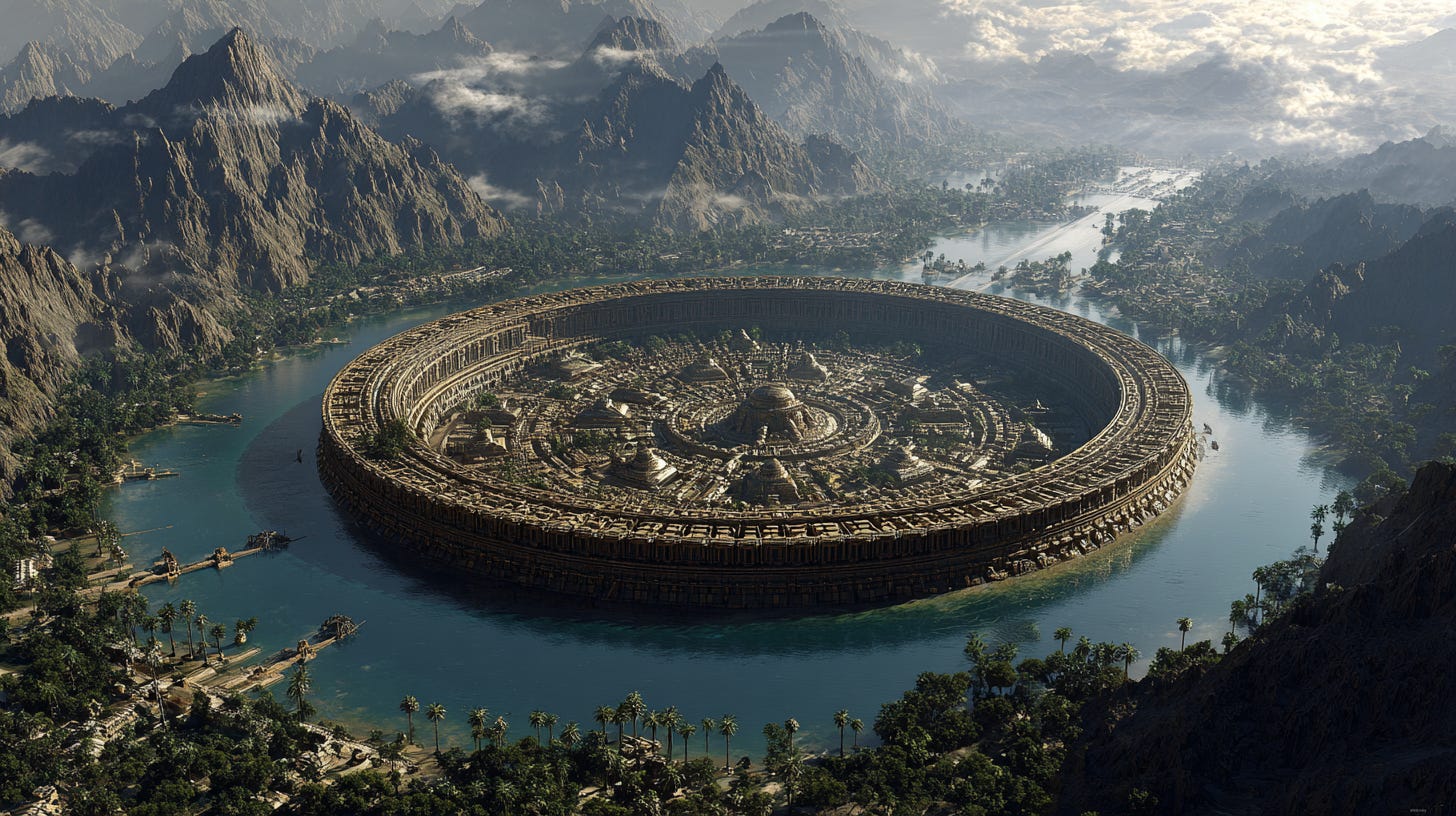Have we done this before?
My theory that we are not the first advanced human civilisation.
I think humanity has risen and fallen more than once and that our so-called “beginning” might only be the most recent re-start. What we call “prehistory” is simply what we no longer remember, we’re a species with amnesia and I believe we’ve misunderstood just how far and important that lost history might be.
What do we even mean by prehistory?
Prehistory is everything before written records. No manuscripts, no archives, no personal letters. All we have are fragments: bones, stone tools, cave art, sediment layers, DNA. Archaeologists, paleontologists, and geneticists try to stitch it together, but the further back you go, the murkier things get. It’s like reading an epic through half-erased pages and frankly I think many of these scientists are refusing to even consider the possibility that there’s far more to human history than we think.
So all the statements about when “humans suddenly got clever” or “civilization began” are built on complete guesswork and theory.
The skull that’s shaking up the timeline
What caused me to ponder this? Well, I’ve always thought there was something off with our history. Too many anomalies and strange discoveries that make the established story seem farcical but just recently, a study made headlines for re-examining a fossil long stored in a drawer. The skull, called Yunxian 2, was discovered in China in 1990. But fresh digital reconstruction suggests it might date between 940,000 and 1.1 million years old. Phys.org+3Reuters+3Live Science+3
What’s more provocative is how the skull seems closer in form to Homo longi (the so-called “Dragon Man”) — a lineage thought to be aligned with Denisovans, rather than just a typical Homo erectus. That suggests the split among lineages leading to us, Neanderthals and Denisovans might stretch back much further than previously assumed. Archaeology Magazine+3The Guardian+3Live Science+3
If that holds, it gives my theory breathing room: intelligent, “modern-brained” hominins might not be a relatively recent thing, but instead are far older than we ever imagined.
So what were they doing all that time?
Here’s where I turn speculative (because we’re past the edge of solid data):
Cyclical civilisations: previous warm periods enabled flourishing cultures, collapsed under harsher climate, then vanished. In the past 1 million years there have been several warm periods like the one we’re currently in each lasting several thousand years, in some cases hundreds of thousands.
Erasure and decay: glaciations, sea level changes, volcanic events — all could obliterate built structures or bury them irretrievably. Theories suggest it would take just 2-4k years for all evidence of our global spanning civilisation to vanish completely. If an alien decided to visit after we’re gone they would see a pristine world with no obvious signs we ever existed.
Scattered / subterranean living: maybe distant continents, underground networks or oceanic habitats preserved vestiges too deep or remote to find. Perhaps what we see as UFOs (UAPs) are remnant tech from one of the human civilisations that existed far in the past. Ghosts just patrolling and monitoring the planet for their now long deceased masters.
Knowledge rediscovery: what we see as sudden inventions (metallurgy, agriculture, writing) might be re-inventions of lost tech. Tales of strange advanced tech used in Ancient Egypt and elsewhere could have been remnants from the earlier civilisations.
In short: if brains like ours existed far back in time, it’s unlikely they were idle for hundreds of thousands of years. They had to be doing something — rising, experimenting, building, losing, re-emerging.
We’re still in an ice age — that matters
Yes, we are still in an ice age: the Quaternary glaciation (aka Quaternary ice age) began about 2.6 million years ago. Earth’s climate has since oscillated between cold (glacial) and warm (interglacial) phases. Utah Geological Survey+3NCEI+3The Current+3
We currently live in a warm interlude known as the Holocene, which began ~11,700 years ago. But before us, many similar warm spells have occurred. In the last 800,000 years alone, scientists identify at least 11 interglacial periods using marine isotope data. AGU Journals
Interestingly, about 1 million years ago, Earth’s climate cycles underwent a shift with the Mid-Pleistocene Transition (MPT). Before that, glacial/interglacial swings tended toward a ~41,000-year rhythm; afterward, much stronger ~100,000-year cycles became dominant. NSF - National Science Foundation+2State of the Planet+2
So over the past million years, there have been many “windows of warmth” lasting thousands of years plenty of opportunities for hominins to expand, grow, experiment only to be forced to retreat when the ice returned. Here’s where my theory gets really wild. What if one of those civilisations advanced to a point beyond our own. That they mastered space flight and before the ice destroyed their Earth bound civilisation they took to the stars. What if those strage lights, those strange stories are our relations keeping an eye on us?
Weaving it into Star Core
In my Star Core series, I posit that humanity (or a humanlike intelligence) has existed far longer than orthodox histories allow and that we’ve been through multiple rising and falling epochs. These recent fossil discoveries and Earth’s cyclical climate system give me narrative scaffolding.
I suggest:
the “dawn” of agriculture and writing 8,000–10,000 years ago may be just our latest spark, not the first
earlier civilisations could have collapsed in deep time, lost to cycles of ice and upheaval
myths, ruins, and anomalous archaeological finds might be the shadows of those lost ages
the rhythm of interglacials gives me fertile plot windows: when star-travel, memory harvests, hidden rediscoveries, and cosmic echoes reawaken
In effect, civilisation’s origin story in Star Core becomes a rediscovery of memory, not creation from scratch.
We are still fumbling in twilight when it comes to prehistory. What we accept as the “origin” of human culture may just be the latest spiral. The newly reanalysed Yunxian skull challenges us to push boundaries. And Earth’s long ice–warm cycles hint at repeated opportunities for complex life to rise — and fall.
Below are some key articles and studies you and your readers might want to dive into:
Further reading / sources
“Ancient skull from China may shake up timeline of human evolution” — Reuters Reuters
“Study of 1m-year-old skull points to earlier origins of modern humans” — The Guardian The Guardian
“1 million-year-old skull from China holds clues to the origins of Neanderthals, Denisovans and humans” — LiveScience Live Science
“Interglacials of the last 800,000 years” — AGU/Wiley (marine isotope study) AGU Journals
“Why did glacial cycles intensify a million years ago?” — NSF / Columbia commentary NSF - National Science Foundation+2State of the Planet+2
“Glacial-Interglacial Cycles” (NOAA) — overview of Quaternary cycles NCEI





I've been intrigued by these same ideas since watching Ancient Apocalypse on Netflix. I haven't done a lot of research, but there is a growing amount of Christians speculating about the antediluvian world which pull on many of the same strings.